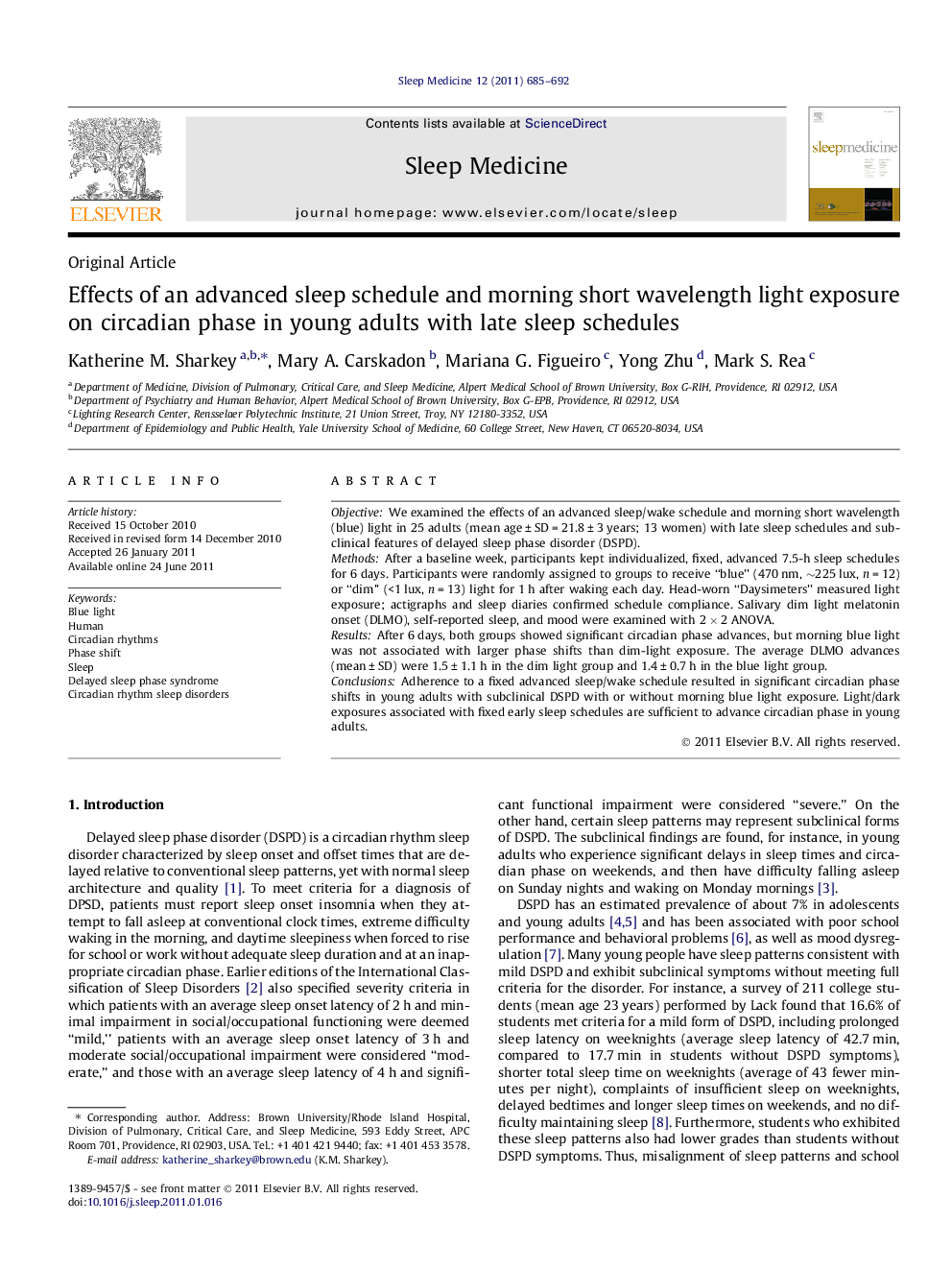| Article ID | Journal | Published Year | Pages | File Type |
|---|---|---|---|---|
| 3177062 | Sleep Medicine | 2011 | 8 Pages |
ObjectiveWe examined the effects of an advanced sleep/wake schedule and morning short wavelength (blue) light in 25 adults (mean age ± SD = 21.8 ± 3 years; 13 women) with late sleep schedules and subclinical features of delayed sleep phase disorder (DSPD).MethodsAfter a baseline week, participants kept individualized, fixed, advanced 7.5-h sleep schedules for 6 days. Participants were randomly assigned to groups to receive “blue” (470 nm, ∼225 lux, n = 12) or “dim” (<1 lux, n = 13) light for 1 h after waking each day. Head-worn “Daysimeters” measured light exposure; actigraphs and sleep diaries confirmed schedule compliance. Salivary dim light melatonin onset (DLMO), self-reported sleep, and mood were examined with 2 × 2 ANOVA.ResultsAfter 6 days, both groups showed significant circadian phase advances, but morning blue light was not associated with larger phase shifts than dim-light exposure. The average DLMO advances (mean ± SD) were 1.5 ± 1.1 h in the dim light group and 1.4 ± 0.7 h in the blue light group.ConclusionsAdherence to a fixed advanced sleep/wake schedule resulted in significant circadian phase shifts in young adults with subclinical DSPD with or without morning blue light exposure. Light/dark exposures associated with fixed early sleep schedules are sufficient to advance circadian phase in young adults.
